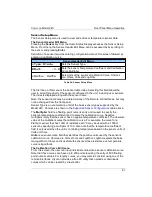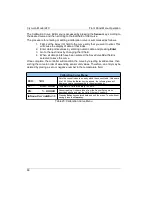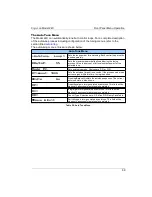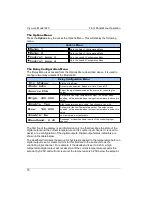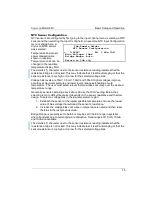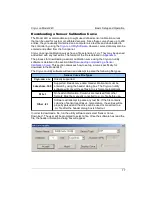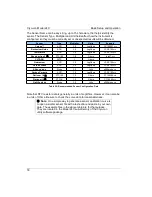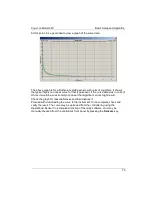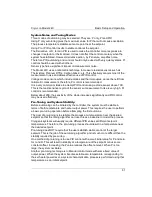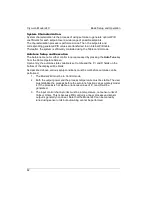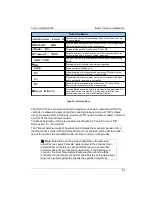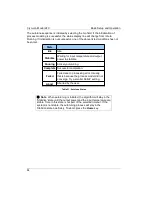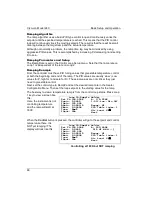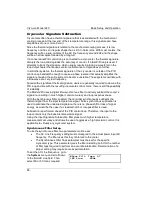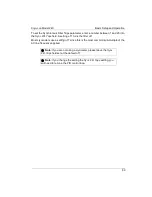
Cryo-con Model 24C
Basic Setup and Operation
Using NTC Sensors
Negative-Temperature-Coefficient (NTC) resistors are often used as low temperature
thermometers, especially at ultra-low temperature. Their resistance and sensitivity
increase dramatically at low temperature but their sensitivity is often relatively poor at
warmer temperatures. The Model 24C supports these sensors by using a constant-
voltage AC resistance bridge:
●
Measurement accuracy and temperature range are improved at low
temperature because sensor self-heating errors are reduced or eliminated.
●
Measurement accuracy is improved at warmer temperatures because the
constant voltage circuit increases excitation power in that region.
●
The control stability is improved in the warm region since higher excitation
power reduces measurement noise.
●
DC offsets in the resistance bridge can cause additional power dissipation at
low excitation levels. The Model 24C holds offsets to a maximum of one-half
of the minimum excitation current by use of an offset cancellation feedback
loop.
Error Sources in NTC Sensor Measurements
At warm temperatures, the major source of error with NTC sensors is the
measurement electronics itself. In a well designed instrument, accuracy is limited to a
level established by the measurement's signal-to-noise-ratio, where the signal is the
power dissipated in the sensor and noise is the collection of all noise sources. Thus,
accuracy is generally improved by increasing the power dissipated in the sensor.
Conversely, at low temperature, NTC resistors have high resistance and the primary
source of error is sensor self-heating caused by excitation power. The resistor has
high sensitivity in this region, so measurement errors are small when viewed in units
of temperature.
Constant-voltage sensor excitation increases signal power at warm temperature,
thereby improving measurement accuracy in an area where the sensor is less
sensitive. At low temperature, constant voltage excitation reduces the power
dissipated in the sensor which reduces accuracy in units of Ohms, but more
importantly, reduces sensor self-heating. Since low temperature is the sensor's most
sensitive area, temperature measurement accuracy will not be degraded. The result
is an accuracy improvement that extends the useful temperature range of a given
sensor at both the warm and cold ends.
74








